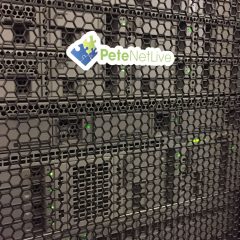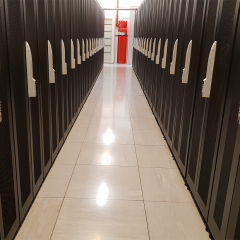Exchange: Can’t Delete a Database
KB ID 0001414 Problem Every iteration of Exchange comes up with some new system/hidden mailbox type that stops me deleting mailbox databases! This mailbox database contains one or more mailboxes, mailbox plans, archive mailboxes, public folder mailboxes or arbitration mailboxes, Audit mailboxes. To get a list of all mailboxes in this database, run the command Get-Mailbox -Database <Database ID>. To get a list of all mailbox...
Virtual SAN: Suppress ‘Datastore Usage on Disk’ Alarm
KB ID 0001527 Problem While deploying a HPE StoreVirtual VSA this week. We noticed all the local Datastore were showing an ‘Alarm’. If you are unfamiliar with Virtual SANs, then you give all the LOCAL Storage to them, which then gets ‘aggregated’ and provided back to the host(s) as fault tolerant clustered storage, like so; Which is great, but the VMware hosts just see that their LOCAL Datastore(s) are full,...
Deploying a ‘Nano’ Webserver (IIS)
KB ID 0001526 Problem We’ve had Server Core for a while now, and I’ve never really seen it deployed in anger. Now we have Nano Server. You don’t install this like normal Windows Server distributions, i.e. it’s not an option when you run the install DVD. Originally you have to create the image with Powershell, but now you can use ‘Nano Server Image Builder’. Nano Server is a tiny distribution, and...
VMware ‘Disable DelayedAck’ Does Not Work?
KB ID 0001525 Problem I’ve got a client that’s been having some performance issues with their VMs. Their storage vendor, (EMC) said that as a result of finding this in the logs; B 02/28/19 09:50:53.953 scsitarg 117000e [INFO] System: iSCSI Logout Initiator Data: IP=192.168.200.161 Name=…-ec-21 Target Data: Port=2 Flags=0x00002002 Info=0x01200801 B 02/28/19 09:50:53.969 scsitarg 117000e...
Windows: Deploy and Configure DNSSEC
KB ID 0001524 Problem Like many protocols and solutions, DNS was designed in a time when we all trusted each other, and a ‘hacker’ was some sort of farm equipment. To ensure when you get a response form a DNS server it is coming from where you expect it to, and you can trust it. We use DNSSEC. Basically it signs the DNS record with a digital cypher. The client can then validate the DNS record when it receives it and it...





